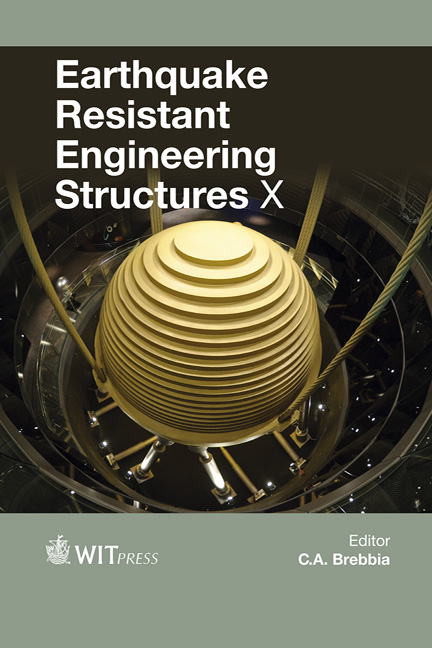Evaluation Of Seismic Design Provisions For A Drift And Inter-story Drift Relationship
Price
Free (open access)
Transaction
Volume
152
Pages
12
Page Range
21 - 32
Published
2015
Size
587 kb
Paper DOI
10.2495/ERES150021
Copyright
WIT Press
Author(s)
B. Erkmen
Abstract
Maximum roof drift (RD) and inter-story drift (ISD) demands are important seismic design parameters since they are used to evaluate seismic hazard levels and performance state for structures located in seismic regions. ISD demand, especially, is an important seismic design parameter for evaluation of seismic performance of both structural and non-structural elements. Therefore, it is important to have well established and accurate procedures to predict seismic displacement demands. In seismic design, both maximum inelastic RD and ISD demands are calculated using elastic displacements that are amplified by the same displacement amplification factor (Cd) to account for inelastic deformations. In other words, seismic provisions imply that both maximum RD and ISD demands are linearly related and proportional to their corresponding elastic design values. In addition, the higher mode-effects are neglected or assumed to have equal effect on both drift and ISD demands.
In this study, the relationship between maximum RD and ISD demands has been investigated for 18 five-story parking garage structures, which had unbounded post-tensioned shear walls as lateral load resisting system, to investigate accuracy and applicability of code provisions for calculating inelastic seismic drift demands. The structures were located on stiff and soft clay soils in high seismic sites, and they were analyzed using nonlinear models of the structures and method of numerical integration to suites of six ground motion acceleration histories including both near-fault and far-fault motions. The ground motions were compatible with the design response spectrum for each site. The structures had unbounded post-tensioned shear walls as seismic force resisting system. The results show that the ratio of maximum inelastic RD and ISD for the structures is relatively constant, which is consistent with the code provisions. In addition, the computed maximum inelastic ISD demands of the structures were approximately 85% of those predicted using the code provisions. This indicates that the code provisions for predicting ISD demands are conservative.
Keywords
drift, inter-story drift, displacement amplification, unbonded posttensioned shear walls





